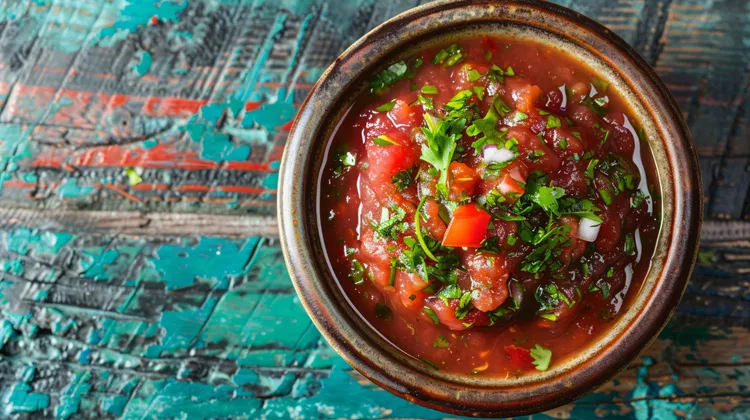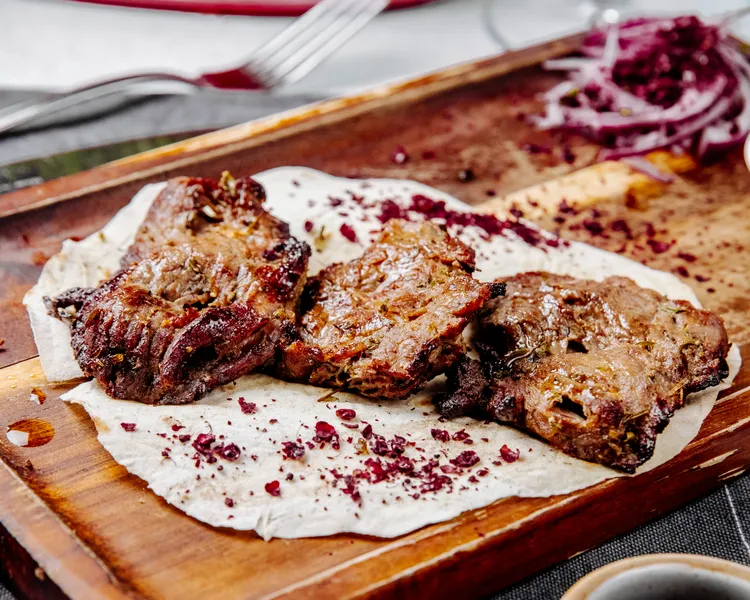The Secrets Behind Authentic Mexican Salsas
When you dive into the flavours of Mexico, salsa isn’t merely a side dish - it’s a vital thread woven into every meal, every taco, every family gathering. The vibrant taste, the heat, the smoky char, the fresh herbs - these aren’t accidental. They come from centuries-old culinary traditions, regional adaptations, and subtleties of technique that distinguish the truly authentic from the store-bought shortcut.

What “Authentic” Really Means in Mexican Salsa
Roots and purpose
In Mexico, salsa functions more like a condiment, a finishing touch, a flavour-accent than just a “dip”. It belongs on the table alongside tortillas, beans, grilled meats, tacos, eggs - not just as an appetizer. The tradition: fresh, seasonal ingredients; simple techniques; bold flavour. For example, the classic salsa roja features tomatoes, chiles, onion, garlic, and cilantro in a roast/blend/cook cycle.
Ingredient simplicity & freshness
Authentic salsa doesn’t hide behind five dozen additives. Fresh tomatoes or tomatillos, fresh chiles (jalapeño, serrano, árbol, depending), garlic, onion, cilantro, salt, sometimes lime. Roasting or charring is common to add depth. Also: the tool matters (more on that later) - many households use a molcajete (traditional mortar & pestle) rather than just a blender.
Regional & family variation
There’s no one “correct” recipe. Every region, every family, every cuisine-culture tweak. For example, in some places the tomatoes are boiled, in others charred; some use raw chiles, others dried; texture may range from chunky to smooth. What binds them: authenticity is about technique, balance, freshness, and depth of flavour, not rigid adherence to a single formula.
The flavour profile to aim for
Sweetness from ripe tomatoes or roasted veggies
Smokiness / char from roasting or comal use
Heat from chiles (adjustable)
Herbal freshness from cilantro
Acidity from lime/lemon or tomatillos
Salt / seasoning to tie it together
When you taste a truly good Mexican salsa, each of those should be present in balance.
The Building Blocks & What Makes Them Work
Tomatoes (or tomatillos for green salsas)
Tomatoes provide the body, sweetness and colour for red salsas. Roasting them concentrates flavour; char adds complexity. Tomatillos (for salsa verde) bring tang and brightness (though we’ll focus mainly on red/roja here).
Chiles
Chiles bring heat, flavour layers (not just “spicy”). The choice of chile, whether seeds/membranes are removed, whether dried or fresh, all affect outcome. From mild jalapeños to hotter serranos or árbol. Roasting or toasting can deepen flavour.
Remove seeds/membranes if you prefer mild; leave them or use hotter varietals for more kick.
Onion & garlic
These are the aromatics. Sometimes roasted, sometimes raw or partially cooked. They add depth and savouriness. For example: “white onion” often used in Mexican salsas for its sharper flavour.
Cilantro
Arguably a hallmark: fresh cilantro leaves (and even stems) add freshness and brightness. Without it you’ll lose a key signature flavour of Mexican salsas.
Salt, acid, oil
Salt is essential - no matter how good the veg, without salt the flavour suffers.
Acid (lime, lemon) may feature to brighten and balance.
Oil sometimes is used in a flash-fry or in the cooking process of the blended salsa to develop flavour further. For example one method uses a skillet with oil to “flash-fry” the blended salsa for extra depth.
Technique matters: roasting / blending / grinding
Here are typical steps in “good” salsa:
Roast or char the vegetables & chiles (on a comal/stovetop/broiler) to bring a smoky note and soften textures.
Blend or grind: could be blender for smooth styles or molcajete for rustic texture. The strength of grinding matters (too much = mush; too little = chunky).
Cook again (optional but common): once blended, the salsa may go back into a hot skillet with oil for a minute to marry flavours and soften raw edges.
Adjust: Taste and tweak salt, acid, heat before serving.
How to Elevate Your Salsa Game
Use the freshest, ripest tomatoes you can find. A less-ripe tomato will yield a flat salsa.
Don’t skip charring/roasting. That smoky note makes a big difference.
Balance heat and flavour: If you’re new to chiles, start with one jalapeño (seeds removed) and add more later. For bold flavour, add serrano or árbol.
Use salt and acid at the end. Salt amplifies flavours; without it the salsa will taste flat. Lime or lemon juice brightens.
Think about texture: Do you want chunky “salsa de mesa” style, or smooth “salsa taquera” style? Adjust blending accordingly.
Molcajete vs blender: If you have a molcajete (traditional stone mortar), go for it. It gives a rustic, textured result. If you only have a blender, that’s fine, just avoid over-pureeing. Some sources emphasise that texture and grinding technique matter.
Flash-cook the salsa: After blending, a quick sauté in oil deepens flavour and softens raw edge. Especially if you’ve used raw garlic or onion.
Storage: Because it’s fresh and minimally preserved, keep the salsa refrigerated and consume within ~5 days. Frozen is possible for some versions, but flavour may shift.
Adjust seasonings after resting: Salsa often tastes different after it sits for 30 minutes. Heat may mellow, flavours meld. Adjust before serving.
Common Mistakes & How to Avoid Them
When making authentic Mexican salsa, several common mistakes can easily dull the flavor or alter the texture. One of the most frequent issues is using unripe or bland tomatoes, which results in a flat, weak-tasting salsa. Always choose ripe, flavorful tomatoes or enhance them through roasting to deepen their sweetness.
Another mistake is skipping the roasting or charring step. This simple technique gives salsa its characteristic smoky depth. Without it, your salsa may taste raw and one-dimensional. Be sure to roast or char tomatoes, chiles, onions, and garlic on a comal, skillet, or under a broiler.
Many beginners also over-blend the ingredients, which turns the salsa into a thin puree rather than a textured sauce. Instead, pulse gently until you reach the consistency you prefer.
Under-seasoning is another common error. Not adding enough salt makes salsa taste bland and lifeless. Add salt gradually, tasting as you go until the flavors come alive.
Heat management is another challenge. Some remove all seeds and membranes from the chiles, which strips away not just heat but also much of the chile’s flavor. If you prefer a milder salsa, choose a less spicy chile instead of removing everything that gives the pepper its character.
Leaving out acidity - like lime or lemon juice - can make the salsa taste dull. A splash of acid brightens everything and balances the roasted notes.
Finally, people often store salsa too long. Because it's fresh and made without preservatives, its flavor declines quickly. For best quality, use your salsa within about five days and keep it chilled.
Using Your Salsa: Beyond Chips & Dip
Authentic Mexican salsa is wonderfully versatile. Here are some ideas:
Serve with tortilla chips for classic enjoyment.
Drizzle over tacos, quesadillas, grilled meats, eggs (e.g., huevos rancheros).
Use as a marinade: the roasted tomatoes + chiles can flavour meats or vegetables.
Add to rice or bean dishes to impart fresh salsa flavour.
Use as a condiment for sandwiches or burgers to inject Latin flair.
Making an authentic Mexican salsa is both art and science. The science lies in the ingredient ratios, the charring, the seasoning. The art lies in the tweaks you make - more heat here, less acid there; chunky vs smooth; raw vs cooked aromatics. Once you understand the building blocks and the technique, you’ll find you can adapt and riff with confidence.
So grab some ripe tomatoes, fresh chiles, a handful of cilantro, and give it a go. Use one of the recipes above as your base, tweak it to your heat/taste preference, and next time you’ll know exactly why that salsa at the taquería tasted so vibrant.









